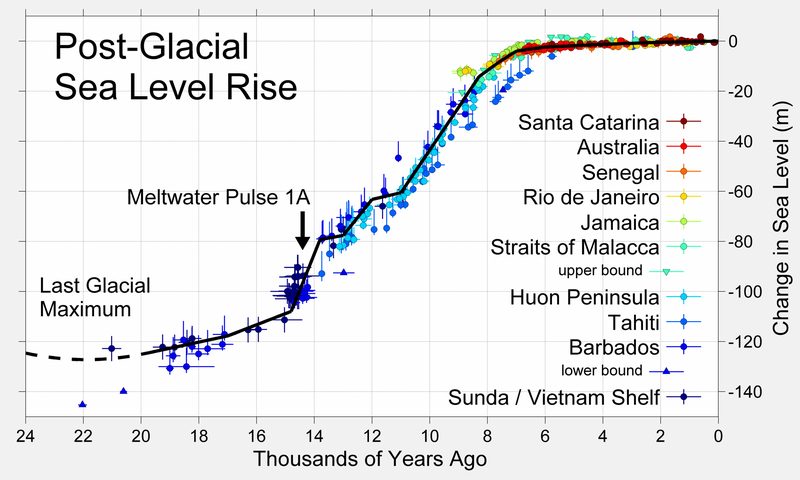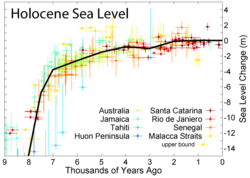Dosya:Post-Glacial Sea Level.png

Bu önizlemenin boyutu: 800 × 480 piksel. Diğer çözünürlükler: 320 × 192 piksel | 1.024 × 615 piksel | 1.280 × 768 piksel | 1.813 × 1.088 piksel.
Tam çözünürlük ((1.813 × 1.088 piksel, dosya boyutu: 371 KB, MIME tipi: image/png))
Dosya geçmişi
Dosyanın herhangi bir zamandaki hâli için ilgili tarih/saat kısmına tıklayın.
| Tarih/Saat | Küçük resim | Boyutlar | Kullanıcı | Yorum | |
|---|---|---|---|---|---|
| güncel | 23.36, 18 Mart 2019 |  | 1.813 × 1.088 (371 KB) | Dragons flight | Higher resolution version |
| 17.26, 25 Kasım 2016 |  | 526 × 359 (19 KB) | A876 | edited to correct spelling. (also OptiPNG.) | |
| 02.20, 27 Aralık 2005 |  | 526 × 359 (23 KB) | Angrense | Sea level variation during the last post-glacial period. Source:English version of Wikipedia. |
Dosya kullanımı
Bu görüntü dosyasına bağlantısı olan sayfalar:
Küresel dosya kullanımı
Aşağıdaki diğer vikiler bu dosyayı kullanır:
- af.wikipedia.org üzerinde kullanımı
- ar.wikipedia.org üzerinde kullanımı
- ast.wikipedia.org üzerinde kullanımı
- beta.wikiversity.org üzerinde kullanımı
- be.wikipedia.org üzerinde kullanımı
- bg.wikipedia.org üzerinde kullanımı
- bn.wikipedia.org üzerinde kullanımı
- bo.wikipedia.org üzerinde kullanımı
- bs.wikipedia.org üzerinde kullanımı
- ca.wikipedia.org üzerinde kullanımı
- cs.wikipedia.org üzerinde kullanımı
- da.wikipedia.org üzerinde kullanımı
- da.wikibooks.org üzerinde kullanımı
- de.wikipedia.org üzerinde kullanımı
- Ozean
- Meeresspiegel
- Präboreal
- Atlantikum
- Subatlantikum
- Meeresspiegelanstieg seit 1850
- Schmelzwasserpuls 1A
- Flandrische Transgression
- Er Lannic
- Doggerland
- Wikipedia:Auskunft/Archiv/2010/Woche 01
- Subboreal
- Boreal (Klimastufe)
- Diskussion:Kontroverse um die globale Erwärmung/Archiv/005
- Benutzer:Zumthie/Fundstücke
- Diskussion:Storegga
- Letzteiszeitliches Maximum
- Allée couverte im Estuaire de la Quillimadec
- Passage Tomb auf Ringarogy Island
- Dolmen von Rostellan
- Allée couverte auf der Île Coalen
- Dolmen von Keroyal
Bu dosyanın daha fazla küresel kullanımını görüntüle.



